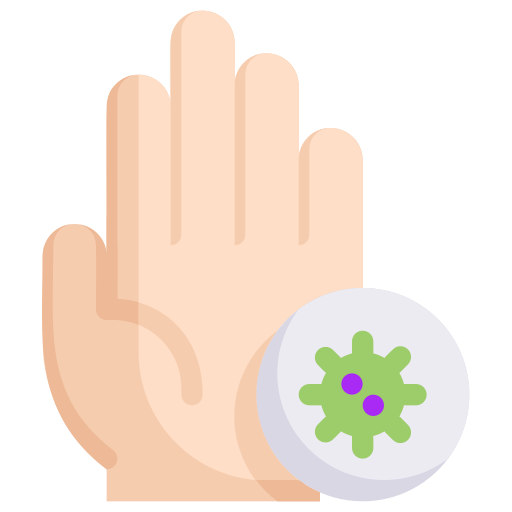The Magic of Honey: Soothing Sore Throats Naturally
Honey, a substance harvested with reverence from the hardworking bees, has been a cornerstone in the annals of natural remedies, particularly prized for its efficacy in soothing sore throats. This golden elixir, rich in antioxidants, possesses antibacterial properties attributed to its unique components such as hydrogen peroxide, methylglyoxal, and its high osmolarity, which can create an unfavorable environment for microbial survival. Studies have delineated honey's significant role in mitigating cough symptoms, thus underscoring its potential as a benign alternative in pediatric care where the delicate balance of developing bodies warrants cautious approach to antibiotic utilization.
In light of growing antibiotic resistance and the quest for safer treatment modalities, honey's appeal significantly increases. Its multifaceted therapeutic attributes stem, in part, from its demulcent properties, wherein it coats the throat, offering a soothing barrier that can alleviate irritation and inflammation. Furthermore, the presence of prebiotics in honey champions the nurturing of a healthy gut microbiome, an aspect increasingly recognized for its indirect but profound impact on immune health. Thus, incorporating honey into the regimen for addressing common pediatric illnesses heralds a step back to nature, aligning with holistic health paradigms that prioritize gentle yet effective interventions.
| Component | Benefit |
|---|---|
| Hydrogen Peroxide | Antibacterial Agent |
| Methylglyoxal | Antimicrobial Activity |
| High Osmolarity | Dehydrates Bacteria |
| Demulcent Properties | Soothes Sore Throats |
| Prebiotics | Supports Gut Health |
With burgeoning evidence supporting these ancient remedies, honey stands out not merely as a folkloric memento but as a clinically relevant alternative, particularly in pediatric applications where the judicious use of antibiotics is paramount. This beckons a larger conversation about integrating such natural remedies, backed by scientific validation, into mainstream awareness, offering promising avenues for non-pharmacological interventions in children's healthcare.
Garlic's Hidden Powers: Fighting Infections Without Antibiotics
Garlic (Allium sativum), a staple in global cuisines, harbors a treasure trove of medicinal properties that transcend its culinary utility. For centuries, cultures worldwide have harnessed garlic's antiseptic, antifungal, and nutritive properties in addressing a plethora of health issues. At the heart of its power lies allicin, a compound emerging upon the crushing or chopping of fresh garlic, renowned for its ability to fight infections. This potent compound offers a compelling, natural alternative for parents cautious about the frequent use of antibiotics for children. The over-prescription and incorrect use of antibiotics pose a significant risk, leading to antibiotic resistance, a looming global health crisis. 
In the realm of scientific scrutiny, garlic's efficacy against bacteria, viruses, and fungi validates its historical use. Studies elucidate garlic's role in enhancing the immune system, possibly reducing the severity and frequency of colds and viral infections. This evidence invites a nuanced exploration of what is antibiotics for children and their place in pediatric care. As immune systems in children are still developing, natural immunity boosters like garlic can be particularly beneficial. Garlic's antimicrobial properties, while gentle, are robust enough to offer support against common pathogens, suggesting its inclusion in children's diets could fortify their defenses against illnesses.
Adopting garlic within dietary practices and health routines does not necessitate forsaking medical advice or the judicious use of antibiotics when necessary. Instead, it emphasizes a holistic approach to wellness, integrating natural supplements to enhance bodily resilience. Parents seeking to mitigate their children's exposure to antibiotics might consider incorporating garlic—in forms ranging from raw cloves added to meals, to aged garlic supplements—under the guidance of healthcare professionals. This strategy not only elevates the nutritional profile of children's diets but also empowers a pro-active stance towards preventing illnesses, paving the way for a healthier generation attuned to the synergy between nature and well-being.
Echinacea: Boosting the Immune System Holistically
In the quest to find natural alternatives to pharmacological solutions, especially concerning what is antibiotics for children, the exploration into the realm of herbal medicine has unveiled several candidates prominent for their immune-boosting properties. Among these, Echinacea stands out as a holistic champion. This herb, a native of North America, has been traditionally used by Indigenous peoples for hundreds of years to treat a variety of ailments. Scientific investigations into its efficacy have highlighted its potential in enhancing the immune system's ability to fend off infections. Its bioactive compounds, including alkamides, polysaccharides, and glycoproteins, are believed to stimulate the immune system, potentially reducing the duration and severity of colds and other respiratory infections.

Research into Echinacea's immune-modulatory effects indicates that it may encourage the immune system's production of white blood cells, which play a critical role in defending the body against pathogens. Moreover, it's suggested that Echinacea could enhance the response of phagocytes, a type of white blood cell responsible for ingesting harmful bacteria and other foreign particles. This action not only supports the body's natural defenses but also presents a compelling argument for its role as a supportive treatment in combatting common illnesses, thereby possibly reducing the reliance on antibiotics for children’s common maladies.
Furthermore, the safety profile of Echinacea is favorable, particularly when used in the short-term management of respiratory infections. However, it’s paramount for parents to consult healthcare professionals before integrating it into children’s health regimens, to ensure its appropriateness based on individual health conditions and potential interactions with other medications.
Embracing Echinacea as part of a holistic approach to health signifies a shift towards preventive healthcare, emphasizing the importance of bolstering the immune system naturally. With the growing concern over antibiotic resistance and the interest in minimizing antibiotic use, especially among children, Echinacea presents a viable, natural strategy to complement the body's innate ability to heal and combat illness. Its use, backed by both tradition and science, offers a testament to the potential of natural substances in maintaining health and preventing disease.
Probiotics: the Gut's Best Friend Against Illness
In the realm of pediatric health, the question of what is antibiotics for children often arises, especially when parents are seeking alternatives to conventional medicine for their offspring's common ailments. Amidst growing concerns over antibiotic resistance and the desire for more natural remedies, probiotics have emerged as a pivotal ally. These beneficial bacteria, which are naturally found in the gut, play a crucial role in maintaining the body's immune response, enhancing its ability to ward off infections. Studies suggest that a balanced microbiota, established through the regular intake of probiotics, can significantly reduce the occurrence of respiratory infections and gastrointestinal disturbances in children, offering a remarkable, natural defense mechanism against illness.

The science behind probiotics reveals a complex interaction between the gut microbiome and the body's immune system. By colonizing the gastrointestinal tract with health-promoting bacteria, probiotics help in the synthesis of essential vitamins and the production of natural antibiotics, which combat pathogenic invaders. This symbiotic relationship enhances the body's innate immunity, making it more adept at fighting off infections without the need for pharmaceutical antibiotics. Furthermore, probiotics contribute to the strengthening of the gut barrier, preventing unwanted substances from triggering immune responses that can lead to inflammation and illness.
Incorporating probiotics into a child's diet can be seamlessly achieved through the consumption of fermented foods like yogurt, kefir, and miso, or through high-quality dietary supplements specifically formulated for pediatric use. It's paramount for parents to choose products that contain viable strains of bacteria capable of surviving the stomach's acidic environment, ensuring that these beneficial microbes reach the intestines where they exert their health-enhancing effects.
The surging interest in probiotics as a natural alternative to antibiotics for children underscores the necessity for further research and awareness among healthcare providers and parents alike. As our understanding of the microbiome deepens, so too does the potential for probiotics to transform pediatric healthcare, offering a promising avenue for the prevention and minimization of common childhood illnesses through a holistic and natural approach.
Essential Oils: Aromatic Paths to Healing
In the realm of natural alternatives for combating common childhood illnesses, essential oils emerge as a compelling avenue of exploration, distinguished by their centuries-old legacy in traditional medicine practices across various cultures. These highly concentrated plant extracts are renowned for their powerful biochemical constituents, capable of providing a range of therapeutic benefits. Among these, certain essential oils have been identified for their antimicrobial properties, offering a promising adjunct or alternative to conventional antibiotics for children, addressing concerns about antibiotic resistance and the quest for gentler, yet effective remedies. Lavender, for example, is celebrated not only for its soothing aroma but also for its ability to support the healing of minor cuts and bruises, thanks to its antiseptic qualities. Meanwhile, tea tree oil has garnered attention for its broad-spectrum antibacterial activity, making it a valuable ally in the fight against bacterial infections without the use of traditional antibiotics.
The efficacy of essential oils as therapeutic agents is underpinned by a growing body of scientific evidence. Studies reveal that certain essential oils can disrupt the cell membranes of pathogens, inhibit bacterial growth, and even enhance the body's immune response. Eucalyptus oil, with its potent anti-inflammatory and antiviral properties, stands out as a boon for children suffering from respiratory ailments, aiding in the alleviation of cough and congestion. Peppermint oil, rich in menthol, is another powerhouse, known to relieve symptoms of the common cold while providing a cooling, comforting sensation. It is crucial, however, to employ these oils with meticulous care, diluting appropriately and consulting healthcare professionals to safeguard against potential adverse reactions, particularly in the pediatric population.
| Essential Oil | Key Benefits |
|---|---|
| Lavender | Antiseptic, aids in wound healing, soothing |
| Tea Tree | Antibacterial, antifungal, supports skin health |
| Eucalyptus | Anti-inflammatory, antiviral, facilitates breathing |
| Peppermint | Relieves cold symptoms, cooling effect |
This table underscores the significance of these essential oils, not merely as aromatic delights but as potent agents of healing and immunity boosting. Their application in pediatric care, when judiciously and safely administered, harbors the potential to mitigate the reliance on antibiotics for children, charting a path towards more natural, holistic health interventions. The exploration and scientific validation of these natural essences continue to unlock new dimensions in healthcare, illuminating the intricate balance between nature's bounty and human well-being.
Elderberry Syrup: a Delicious Defense Against Colds
Elderberries, the fruit from the Sambucus tree, have long been hailed for their medicinal properties, particularly in combating colds and flu. Scientific studies have shed light on the mechanism through which these dark, small berries exert their effects. Rich in vitamins A, B, and C, elderberries are potent antioxidants and immune boosters. They contain flavonoids and anthocyanins, which are known for their anti-inflammatory and antiviral properties. These compounds increase cytokine production, essential for the immune system's communication and response to pathogens, thereby enhancing the body's defense against viral infections.

Moreover, the preparation of elderberry syrup involves boiling the berries with water and sugar or honey, enhancing the syrup's palatability and soothing properties, making it particularly appealing for children. Some preparations also include spices such as ginger and cinnamon, which have additional antimicrobial and immune-supporting benefits. It's important to note that raw elderberries, their leaves, branches, and seeds contain cyanogenic glycosides, which can be toxic, hence why elderberry should only be consumed in its prepared syrup form.
Clinical trials provide supportive evidence for elderberry's efficacy in reducing the duration and severity of cold symptoms. A study published in the Journal of International Medical Research showed that flu patients treated with elderberry syrup recovered on average four days faster than those who did not receive the supplement. Furthermore, elderberry syrup has been shown to ameliorate upper respiratory symptoms, making it a valuable tool in the management of common colds.
While elderberry syrup offers a promising natural alternative for managing colds, it should be used with caution and not as a substitute for medical treatment in severe cases. Parents should consult healthcare professionals before administering elderberry products to children, especially those under the age of one due to the risk of botulism from honey. Nonetheless, when used appropriately, elderberry syrup can be an effective and enjoyable way for children to bolster their immune system and fend off colds.
Content Manager: Dr. Paul Edward Sax











